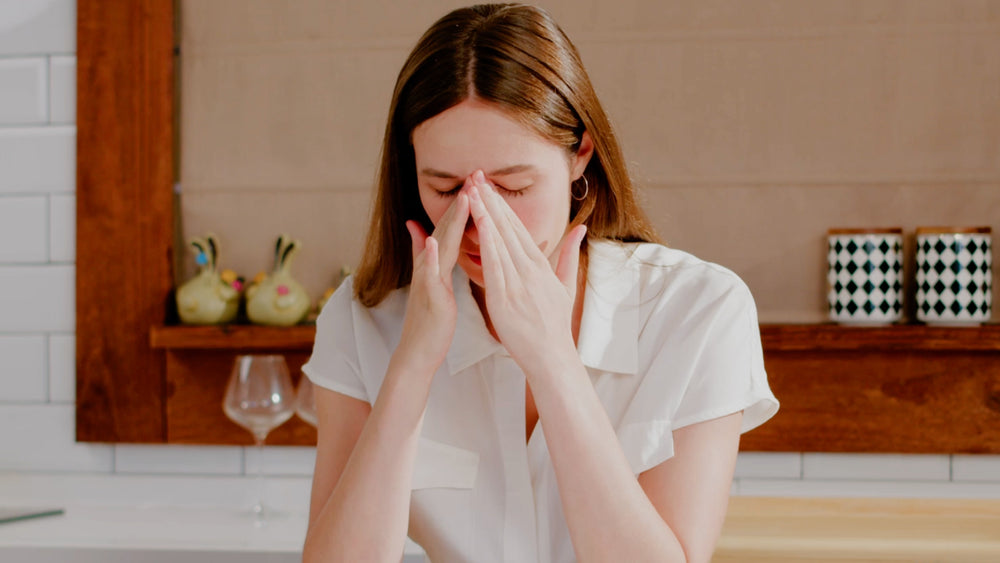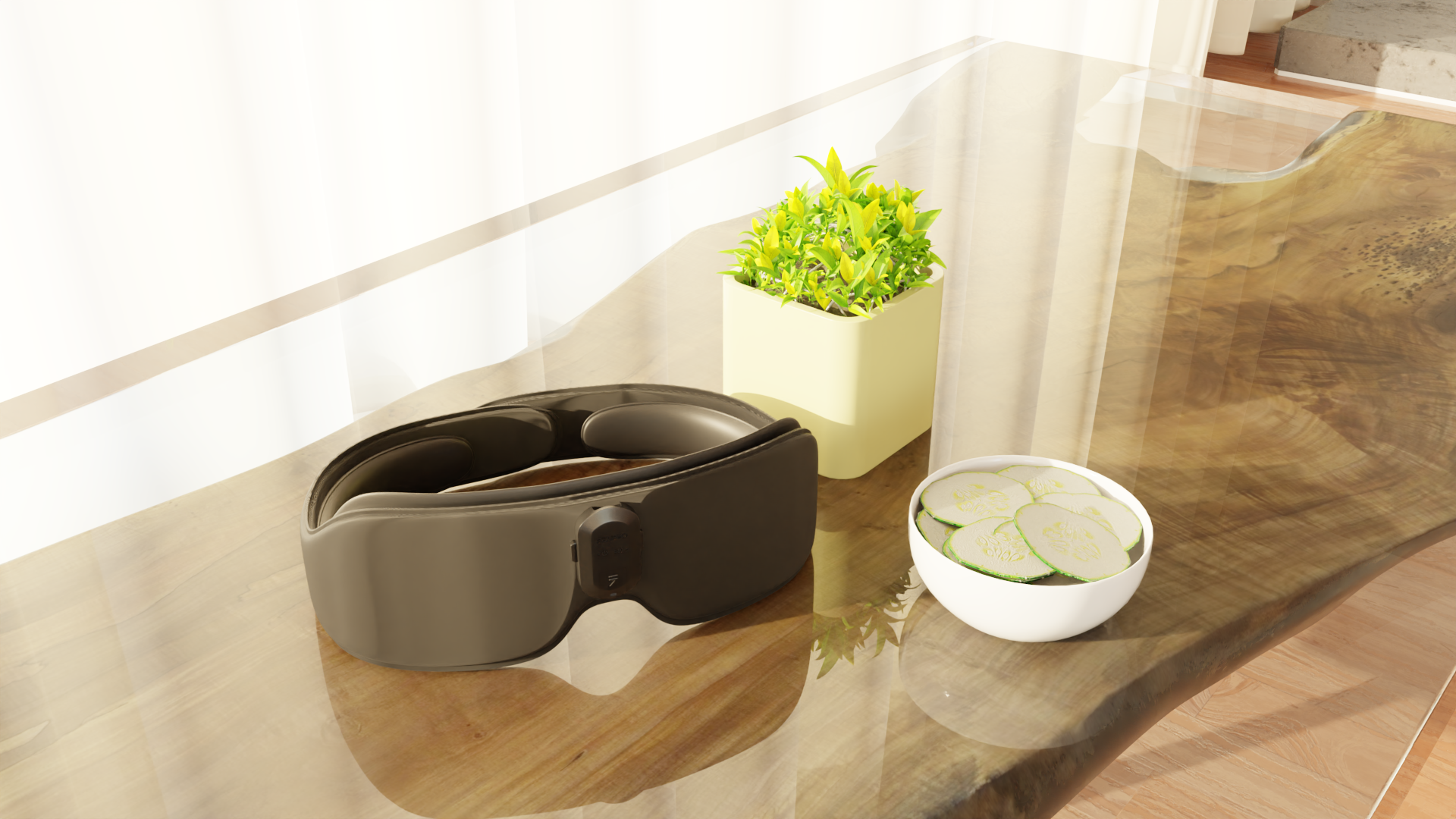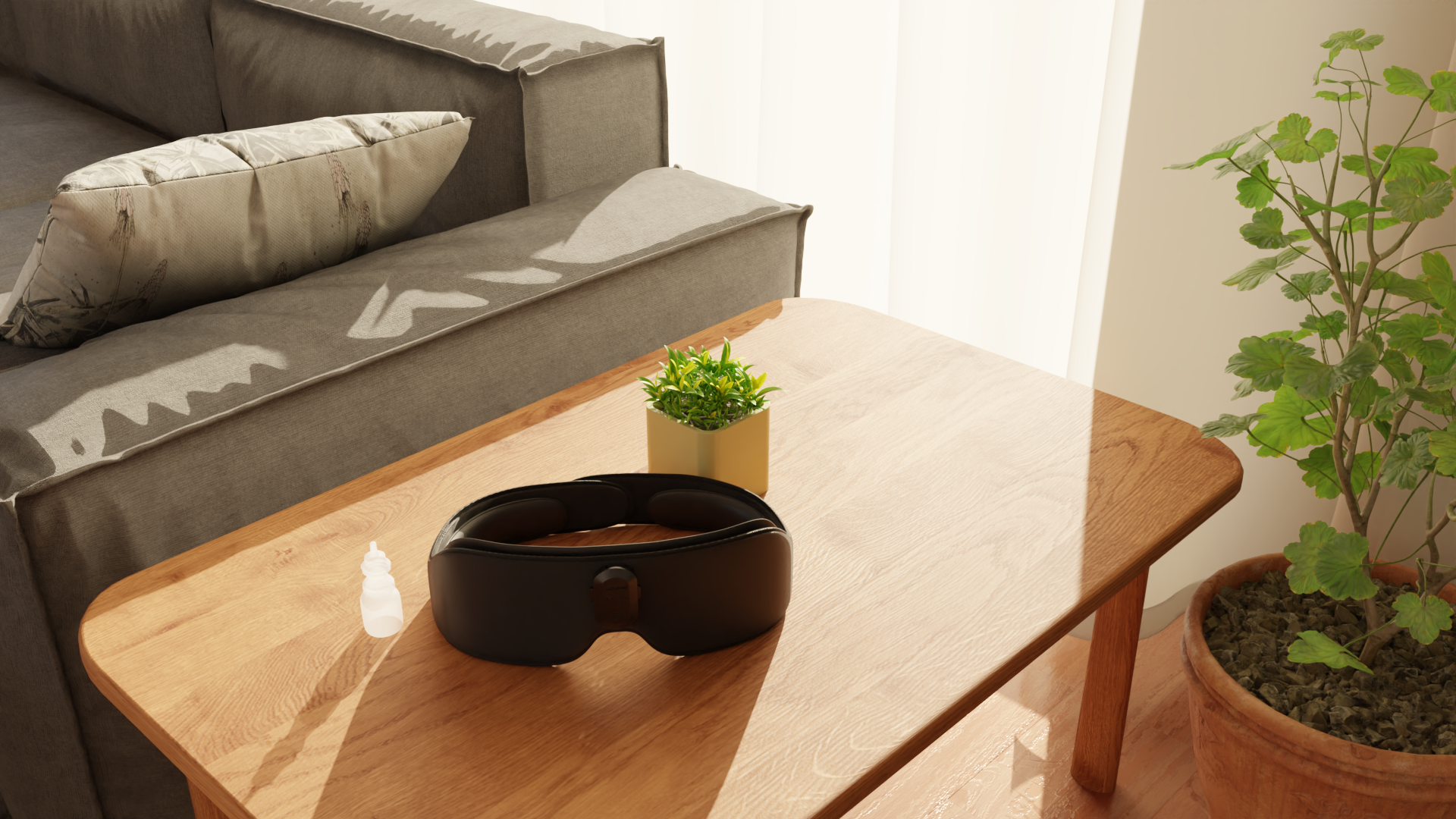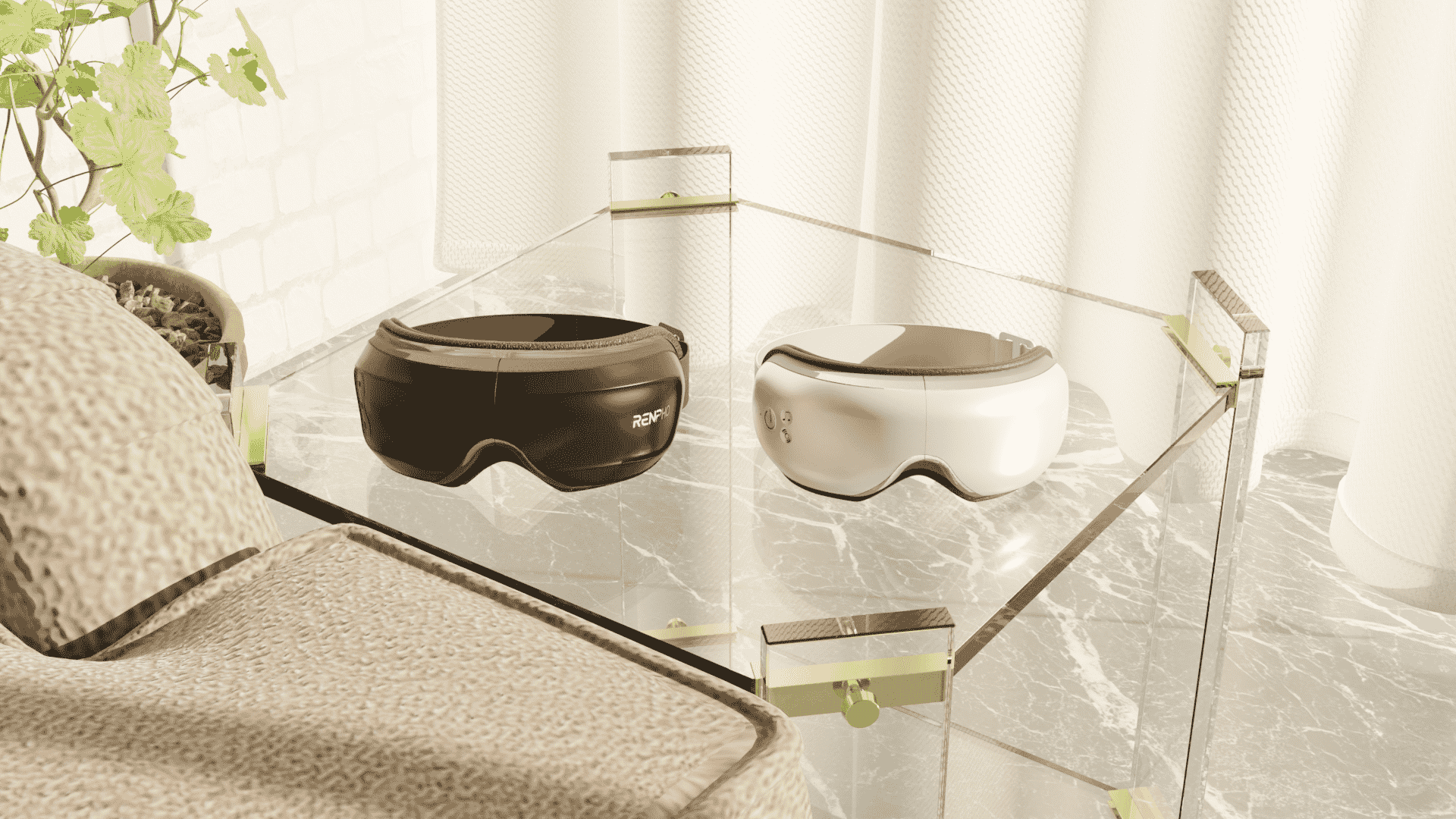How To Relieve Pressure Behind Eyes: Symptoms, Cause and Relief

Stay tuned to our latest news
Pressure behind the eyes is a common complaint within our increasingly digitally inclined world. How many of us spend hours scanning screens for work, to get connected through social media, or just to be entertained?
People often are searching for relief from such tension. Sometimes, it's just a minor annoyance, but other times, it is a more serious concern. This article will explore some of the more practical ways to relieve the pressure behind your eyes, with different methods and home remedies that might help you along with symptoms and causes.
What’s Behind Eye Pressure?
The fluid pressure inside your eyes is usually termed intraocular pressure, or IOP, for short. This is the pressure that maintains the shape of the eyeball so that it functions correctly. The eye is full of a clear fluid called aqueous humor, which the tissues inside the eye produce. The fluid flows through the eye and drains out of it through an extensive, mesh-like channel. If the production and drainage of this fluid are in balance, then eye pressure is normal.
However, if the fluid accumulates because it does not drain as expected, the pressure behind the eyes might increase.The results can include problems such as glaucoma and issues may begin to cause harm in your vision if left untended. Other factors associated with eye pressure include: genetics, age among others medical conditions.
6 Common Causes of Pressure Behind Eyes
- Sinus Infection
- Headaches and Migraines
- Eye Strain
- Optic Neuritis
- Graves’ Disease
- Toothache
Key Symptoms of Pressure Behind Eyes
The following are six common causes and their symptoms of pressure behind the eyes. Understanding these may help you figure out what might be going on.
1. Sinus Infection
Sinusitis is the inflammation or swelling of the tissue lining your sinuses, which are air-filled spaces in your face. At times, these sinuses get irritated by bacteria, viruses, and allergies. When such irritation occurs, they get blocked and become fluid-filled. This blockage may lead to many other uncomfortable symptoms including pressure and pain inside the face, nasal congestion, and pressure behind the eyes. This might get worse when you move your head around or bend over.
Symptoms:
According to the Cleveland Clinic, other symptoms of a sinus infection include:
- Postnasal drip (mucus dripping down your throat)
- Runny nose with thick yellow or green mucus
- Stuffy nose
- Pressure or pain in your teeth
- Fever
- Bad breath (halitosis) or a bad taste in your mouth
- Cough
- Headache
- Tiredness
Solutions:
- Decongestants or over-the-counter medications can help reduce swelling in the sinuses, which may alleviate pressure behind your eyes.
- Nasal Saline Rinses, these can flush out mucus and allergens from your nasal passages, helping to relieve sinus pressure that contributes to discomfort behind the eyes.
- Antibiotics, If your sinus infection is bacterial, a doctor may prescribe antibiotics to clear the infection, thereby reducing pressure.
2. Headaches and Migraine
Tension headaches and migraines are prevalent forms of headache disorders that can significantly impact daily life. Tension headaches, the most common type, often manifest as a constant dull ache and a feeling of pressure around the head. Headaches, especially tension headaches and migraines, are common causes of pressure behind the eyes.
Symptoms:
- Tenderness in the scalp, neck, and shoulder muscles
- Mild to moderate pain
- Pressure behind eyes
- Throbbing or pulsing pain, often on one side of the head
- Visual aura (e.g., zigzag patterns, colorful lines)
- Nausea and vomiting
- Sensitivity to light and sound
- Red and watery eyes
Solutions:
- Over-the-counter pain medicines such as ibuprofen or aspirin can even help reduce the symptoms of headache and pressure behind the eyes. It works much more rapidly if taken promptly.
- Prescription Medications, If the migraine is frequent, the doctor may prescribe a specific migraine treatment. They reduce the frequency of onset headaches and thereby minimize associated eye pressure.
3. Eye Strain
Eye strain or asthenopia is another term used to refer to the tiredness of your eyes. This occurs when your eyes are strained through overuse. It is caused by the use of your eyes while concentrating on something for a long period of time. The causes can range from prolonged reading, working on a computer to even staring at televisions. All this discomfort can lead to your experiencing pressure behind the eyes.
Symptoms:
- Dry eyes or watery eyes
- Blurry or double-vision
- Headache
- Photosensitivity or sensitivity to light
- Blurred vision
- Heaviness of eyes or eyelids tend to feel tired.
Solutions:
- Use blue light-blocking glasses or enable blue light filter settings on devices to minimize exposure.
- Reading or screens can cause such strain, but regular breaks help ease it.
- Simple exercises can help ease up eye muscles.
- If eye stress causes vision disturbances, glasses or contacts can be prescribed.
4. Optic Neuritis
Optic neuritis is a condition characterized by inflammation in the optic nerve, transmitting visual information from the eye to the brain. Such conditions often bring a deep ache behind the eyes, along with pressure, in addition to an inability to see or move the eyes for some time.
The inflammation of optic neuritis may cause swelling and sensitivity within the optic nerve, which can create an impression of pressure behind the eyes. This pain may be worsened by the body's reaction to the inflammation in the form of much ocular pressure that can be quite unbearable.
Symptoms:
- Swelling
- Increased Sensitivity
- Changes in Vision
- Headaches
- Pain in Eye Movement
- Blurry Vision
- Loss Of Color Vision
Solutions:
- Adequate vitamin D levels may be linked to a lower risk of developing optic neuritis, so monitoring levels could be beneficial.
- Engaging in physical therapy might help with coordination and balance issues that can arise following episodes of optic neuritis.
- Maintaining a healthy lifestyle, including a balanced diet and regular exercise.
- Corticosteroids, this medication may be prescribed at high dosage for the alleviation of optic nerve inflammation.
- Vision Therapy may help to improve visual performance after inflammation has resolved.
5. Grave’s Disease
Graves' disease is an autoimmune disorder in which your immune system mistakenly attacks your thyroid gland, located at the front of your neck. This is a small but critical gland that serves as a regulator of metabolic functions and hormone production within the human body. Since this gland becomes overactive, it produces excessive amounts of thyroid hormones, hence creating various symptoms like losing weight, increased rate of heartbeat, anxiety, and sensitivity to heat.
One of the less common symptoms to develop is pressure behind the eyes, which is also known as Graves' ophthalmopathy or thyroid eye disease. This condition causes the eyes to bulge out and causes discomfort.
Why does pressure behind the eyes occur in Graves' disease? Mainly, the pressure behind eyes is due to inflammation and swelling of the tissues found close to the eyes, triggered by the autoimmune response. Swelling can push out the eyes forward, resulting in them bulging behind, so that people get both pressure and visual impairment along with discomfort.
Symptoms:
- Inflammation
- Thyroid Hormones
- Fluid Retention
- Nerve Involvement
- Visual Changes
Solutions:
- Thyroid medications help in controlling hormones within the body and may help reduce the symptoms of pressure behind the eyes.
- Corticosteroids, These medications can alleviate swelling around your eyes.
- In the most severe cases, surgery may be performed to alleviate pressure or align bulging eyes.
6. Toothache
A toothache is defined as a pain in or around a tooth, but the level of pain can range from mild to sharp and throbbing or steady. Toothaches can be the result of several causes: cavities, gum disease, cracked teeth, and abscesses. The ache from a toothache often radiates beyond the mouth, causing sensations in the face and even pressure behind the eyes.
Since nerves in the face and jaw are grouped together, it often occurs that pain felt in one location is actually related to another location. In some cases, the infection or inflammation of a tooth may cause pain along nerve pathways in areas such as the cheeks, temples, and behind the eyes due to pressure sensations.
Symptoms:
- Sharp, throbbing, or constant pain in or around a tooth
- Sensitivity to hot or cold foods and drinks
- Pain when biting or chewing
- Swelling around the affected tooth or gums
- Red or swollen gums
- Bad taste or odor in the mouth
- Headache or earache in some cases
- Fever or swelling in the face (in severe cases)
Solutions:
- Over-the-counter pain medications like ibuprofen or acetaminophen may reduce swelling and ease the pain.
- Apply cold packs to your cheeks outside to numb the area and reduce the swelling.
- Rinse mouth with warm saline water to cleanse the affected area and reduce swelling.
- Applying clove oil directly to the ulcerated site helps alleviate the discomfort temporarily because of its analgesic properties.
- The primary cause can be a cavity or an infection that might need filling, root canal, or extraction.
How to Relieve Pressure Behind Eyes with Home Care?

Pressure behind the eyes is uncomfortable and distracting. It really becomes a problem mostly if you work in an office that requires you to stare at screens or some papers for more than 6-8 hours. Fortunately, there are a couple of care measures that can be done at home to ease this discomfort, for instance.
- Warm Compress. Apply warm compresses to your closed eyes. This has relaxing effects on the muscles around your eyes and promotes blood circulation through that region. Soak a clean cloth in warm water, wring it out, and place it over your eyes for about 10 minutes.
- Hydration. Adequate water intake all day round can also help. Dehydration is a possible cause of eye strain, so drink at least eight glasses of water a day.
- Rest your Eyes. Remember to take your eyes away from the screen from time to time. If you're not sure about how often you should look away from the screen, try this simple but helpful tip: look at something 20 feet away every 20 minutes for at least 20 seconds.
- Use an Eye Massager. With an eye massager, you’ll receive several benefits for your eyes. One such benefit is with the RENPHO Eyeris 3 Eye Massager, which softly massages all the regions around your eyes to relieve tension and encourage blood circulation around the areas. It helps out anyone who sits in front of screens for long periods because it eases pain and fatigue. This eye massager also features by providing heat and vibration options, which makes it far more relaxing. It provides gentle relief to the pressure behind your eyes while also promoting comfort in the surrounding areas.
- Adjust Your Environment. See that your working area is well-lit. Also, see that the screen is in line with your level of eyes. This could help ease the pressure on your eyes.
- Quality Of Sleep. Lastly, get enough sleep. Spend 7-9 hours each night so that your eyes will be relieved and won't have pressure.
When you try these home care methods to help with the pressure you feel behind your eyes, it's good to remember that it might bring some relief, but it doesn't mean it will completely treat your symptoms. If you're dealing with ongoing discomfort, it’s a smart idea to check in with a doctor or healthcare professional. They can help you figure out the best way to manage what you're feeling and make sure there’s nothing more serious going on.
When to See a Doctor to Relieve Pressure Behind Eyes?
Pressure in the eyes is not a severe medical condition, but it may be related to a condition that needs consideration. Some conditions can be treated from home, but If home remedies could not relieve your discomfort after several days, consider your health and seek professional advice.
Be on the lookout for severe headaches, changes in vision, or other continuous pain. Loss of vision, bulging eyes, fever, frequent headaches, or swelling of the face require immediate medical attention.
Here are additional symptoms to consider when experiencing pressure behind the eyes:
- Nausea or vomiting
- Sensitivity to light
- Blurred or double vision
- Swelling around the eyes
- Eye redness or irritation
- Fever
- Pain in the temples or forehead
- Stiff neck
- Fatigue or tiredness
- Difficulty concentrating
Conclusion: Effective Ways to Relieve Pressure Behind Eyes
In most cases, pressure behind the eyes is caused by excessive viewing of the screen, pressure, or tiredness. Fortunately, there are still more effective ways to relieve pressure behind the eyes aside from those that were already mentioned.
One of the simplest yet most effective ways is applying relaxation techniques. Deep breathing, meditation, and gentle yoga can help calm your mind and reduce tension. By simply taking a few moments to focus on your breath, you can clear your mind and ease some of the pressure you may feel behind your eyes.
Using drops of artificial tears is also one of the most effective measures. These tear-like eye drops lubricate the eyes, reducing dryness and irritation associated with discomfort and pressure. This method is essential as when you stare at your smartphone, laptop, or other digital devices, you unconsciously tend to blink less frequently, and the usual moisture evaporates and can lead to pressure behind the eyes. Artificial tears may be applied regularly and give immediate relief.
It may be mentioned above but the Eye Massager undoubtedly is one of the most effective and convenient solutions for releasing day-to-day pressure behind the eyes. Consistent use helps prevent pressure behind the eyes from building up because of accumulated tension. It makes such an easy addition to self-care and can prove especially helpful after a long day spent working or scrolling through screens.
Although the mentioned home remedies and ways to relieve pressure behind the eyes can turn out to be effective, it is essential to consider the fact that chronic or strong pressure behind your eyes can be a sign of underlying conditions. If you experience symptoms like extreme pain, changes in vision, or other disturbing signs, you should get consulting help from a health professional. They can identify the root cause of your discomfort and recommend the appropriate treatment course.
Overall, relieving pressure behind your eyes does not have to be complicated. Simple practices such as regularly stepping away from screens, drinking enough water, and getting enough sleep can be comforting in the eyes. Bringing these effective ways to relieve pressure behind eye remedies under your control will help you enjoy clearer, more comfortable vision.
Renpho Health Tips
-

Conquering Migraines: Unlocking the Power of Eye Massagers for Lasting Relief
January 9, 2024
Read more >
-

Say Goodbye to Dark Circles: How Eye Masks Can Transform Your Look
January 12, 2024
Read more >
-

Can Eye Masks Relieve Your Dry Eye Problem?
January 15, 2024
Read more >
-

Relief at Your Fingertips: Exploring Reflexology for Dry Eyes
January 18, 2024
Read more >
-

Maximizing Eye Mask Benefits: Optimal Weekly Usage
January 23, 2024
Read more >






